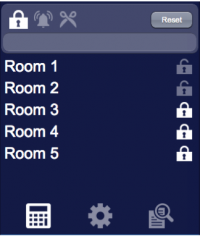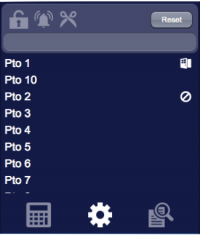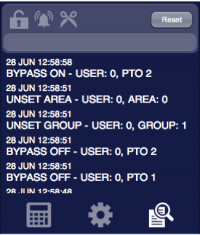System
The HSYCO System Monitor I/O Server is used to monitor several key hardware and operating system parameter of an HSYCO server:
- Operating system boot time
- HSYCO start time
- Disk space
- Java memory (used, free and maximum available memory)
- Performance (CPU percent busy time, 1 minute load average, 5 minutes load average)
- Console error messages
- Internet connection status
- Cameras status
- I/O Servers status
- Clock drift of remote HSYCO servers monitored through the HSYCOREMOTE I/O server.
Contents
HSYCO Configuration
You can have only one HSYCO System Monitor I/O Server.
Options
| ID | Default | Values | Description |
|---|---|---|---|
| gui | true | true | enable support for the UI object, UISET actions and USER commands |
| false | disable UI support | ||
| pollinterval | 30 | n ≥ 10 | the data acquisition interval, in seconds |
Datapoints
| ID | Value | R/W | Description |
|---|---|---|---|
| time | <val> | R | the system’s timestamp, in milliseconds |
| start.elapsed | <val> | R | number of seconds since HSYCO start-up time |
| start.time | <date> | R | HSYCO start-up time, formatted as "YYYY-MM- DD hh:mm:ss", for example: "2012-09-29 22:36:43" |
| boot.elapsed | <val> | R | number of seconds since operating system boot time |
| boot.time | <date> | R | operating system boot time, formatted as "YYYY-MM-DD hh:mm:ss", for example: "2012-09-29 22:36:43" |
| cpu.usage | <val> | R | CPU percent busy time |
| oad.avg.1 | <val> | R | the system’s load average during the last 60 seconds |
| oad.avg.5 | <val> | R | the system’s load average during the last 5 minutes |
| oad.avg.15 | <val> | R | the system’s load average during the last 15 minutes |
| disk.free.percent | <val> | R | the free storage space as a percentage of total available space |
| disk.free | <val> | R | the free storage space in Mbytes |
| disk.used | <val> | R | the used storage space in Mbytes |
| memory.free | <val> | R | the amount of free run-time memory of the Java virtual machine, in Mbyte |
| memory.max | <val> | R | the maximum amount of run-time memory that could be used by the Java virtual machine, in Mbyte |
| memory.used | <val> | R | the amount of run-time memory used by the Java virtual machine, in Mbyte |
| camera.total | <val> | R | the total number of cameras defined |
| camera.errors | <val> | R | the number of cameras that HSYCO is unable to access |
| camera.errors.list | <list> | R | a comma separated list of the cameras having errors, or an empty string if there are no errors |
| io.total | <val> | R | the total number of I/O servers defined |
| io.errors | <val> | R | the number of I/O servers that HSYCO is unable to access |
| io.errors.list | <list> | R | a comma separated list of the I/O servers having errors, or an empty string if there are no errors |
| internet.connection | online | R | Internet access from HSYCO is working properly |
| offline | HSYCO is unable to access the Internet | ||
| console.errors | 0 | R | the console.log file contains no new errors |
| 1 | the console.log file contains new errors |
User Interface
Guardall Object
The user interface for the Guardall multi-area intrusion detection system:
The Guardall object is listed in the Project Editor’s new object list only when at least one Guardall I/O Server is defined.
Parameters
- server id: the server ID
- position: the object's position. Use the pixels or rows and columns coordinates format
Syntax
(guardall <server id>; <position>)
E.g.
(guardall serverid; x10y20)
UISET Actions
| ID | Attribute | Set to | |
|---|---|---|---|


